Auto Supplier Magna To Manufacture BMW 5 Series Plug-In Hybrids
car&bike Team
1 min read
Jun 20, 2017, 12:42 AM
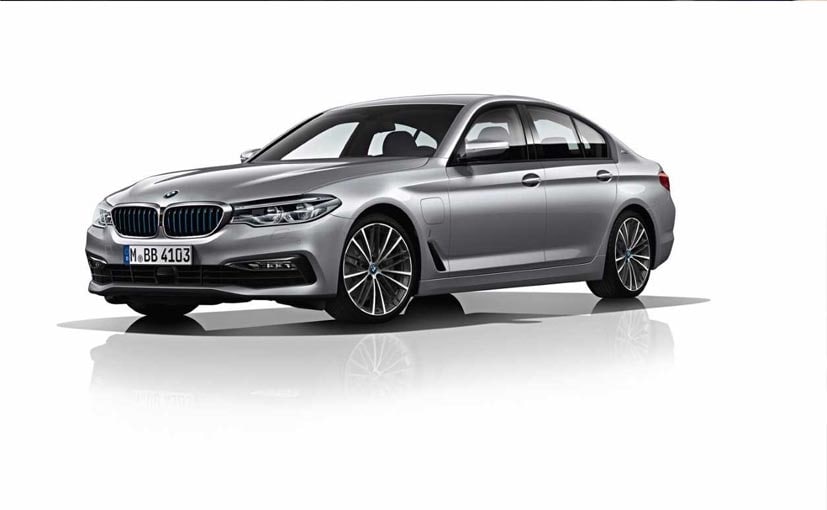
Key Highlights
- Magna plans to produce Jaguar's I-PACE SUV beginning in early 2018
- Its Austrian plant can produce about 200,000 cars per year
- Magna is currently building a new paint shop in Slovenia
Canadian auto supplier Magna International Inc will produce BMW's new 5-series plug-in hybrid at its Austrian factory, the company said on Monday, part of a strategy to produce electric cars on a contract basis for global automakers.
The BMW 530 plug-in hybrid will be manufactured beginning this summer at Magna's plant in Graz, Austria, where it already plans to produce Jaguar's I-PACE SUV beginning in early 2018. Global automakers and their suppliers are investing heavily in fully-electric and gasoline-electric hybrid vehicles. Consumer demand is still low versus that for gasoline engine vehicles, but companies are beginning to offer more choices to respond to government mandates for greater sales of vehicles that emit little or no carbon dioxide, and prepare for a future experts believe will be dominated by electric vehicles.
Rival tier-one auto supplier Continental AG, for example, said in April it was increasing spending by 300 million euros ($334.68 million) on new products such as charging systems and battery management components related to electric vehicles. Magna, North America's largest automotive supplier and the third globally, is alone among the top auto suppliers to perform contract manufacturing for carmakers. Its Austrian plant can produce about 200,000 cars per year. Magna is currently building a new paint shop in Slovenia due to increased demand.
A Magna spokeswoman would not comment on a statement by the Slovenian government in March that the auto supplier would potentially invest up to 1.24 billion euros in the country, including a car plant with capacity of 100,000 to 200,000 vehicles per year.
Having contract manufacturing in its portfolio creates a niche for the company as automakers slowly bring more electrified vehicles to market over the next decade. For automakers, outsourcing the assembly can be an advantage on low-volume models to minimize capital expenditures and avoid tying up their own production lines.
Swamy Kotagiri, Magna's chief technology officer, said he sees contract manufacturing of electric vehicles as a "near-term opportunity" for the company, given that by 2025, 40 to 50 percent of all vehicles produced will include some electrification elements.
"We are setting up knowing the penetration will be higher." Magna has also produced non-electric cars at its Austrian facility, including BMW's Mini Countryman and Mercedes-Benz' luxury G-Wagen SUV.
Last month, Magna raised its full-year sales forecast on higher demand.
The BMW 530 plug-in hybrid will be manufactured beginning this summer at Magna's plant in Graz, Austria, where it already plans to produce Jaguar's I-PACE SUV beginning in early 2018. Global automakers and their suppliers are investing heavily in fully-electric and gasoline-electric hybrid vehicles. Consumer demand is still low versus that for gasoline engine vehicles, but companies are beginning to offer more choices to respond to government mandates for greater sales of vehicles that emit little or no carbon dioxide, and prepare for a future experts believe will be dominated by electric vehicles.
Rival tier-one auto supplier Continental AG, for example, said in April it was increasing spending by 300 million euros ($334.68 million) on new products such as charging systems and battery management components related to electric vehicles. Magna, North America's largest automotive supplier and the third globally, is alone among the top auto suppliers to perform contract manufacturing for carmakers. Its Austrian plant can produce about 200,000 cars per year. Magna is currently building a new paint shop in Slovenia due to increased demand.
A Magna spokeswoman would not comment on a statement by the Slovenian government in March that the auto supplier would potentially invest up to 1.24 billion euros in the country, including a car plant with capacity of 100,000 to 200,000 vehicles per year.
Having contract manufacturing in its portfolio creates a niche for the company as automakers slowly bring more electrified vehicles to market over the next decade. For automakers, outsourcing the assembly can be an advantage on low-volume models to minimize capital expenditures and avoid tying up their own production lines.
Swamy Kotagiri, Magna's chief technology officer, said he sees contract manufacturing of electric vehicles as a "near-term opportunity" for the company, given that by 2025, 40 to 50 percent of all vehicles produced will include some electrification elements.
"We are setting up knowing the penetration will be higher." Magna has also produced non-electric cars at its Austrian facility, including BMW's Mini Countryman and Mercedes-Benz' luxury G-Wagen SUV.
Last month, Magna raised its full-year sales forecast on higher demand.
(This story has not been edited by NDTV staff and is auto-generated from a syndicated feed.)
Trending News
Latest News
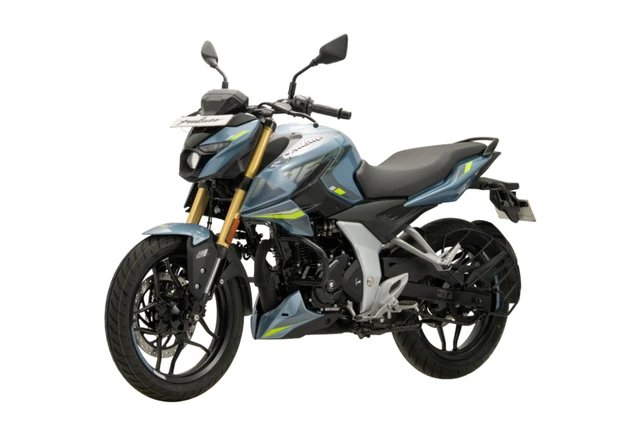 Carandbike Team | Dec 5, 2025Bajaj Pulsar N160 Variant With Gold USD Fork, Single Seat IntroducedThe new variant of the Pulsar N160 is priced at Rs. 1.24 lakh and aimed at offering more comfort and practicality with the single-piece seat.2 mins read
Carandbike Team | Dec 5, 2025Bajaj Pulsar N160 Variant With Gold USD Fork, Single Seat IntroducedThe new variant of the Pulsar N160 is priced at Rs. 1.24 lakh and aimed at offering more comfort and practicality with the single-piece seat.2 mins read car&bike Team | Dec 4, 2025Tata Harrier EV Fords Beas River In Red Bull Extreme StuntRed Bull is putting the Tata Harrier EV through some extreme stunts as part of a recent collaboration with Tata Motors.1 min read
car&bike Team | Dec 4, 2025Tata Harrier EV Fords Beas River In Red Bull Extreme StuntRed Bull is putting the Tata Harrier EV through some extreme stunts as part of a recent collaboration with Tata Motors.1 min read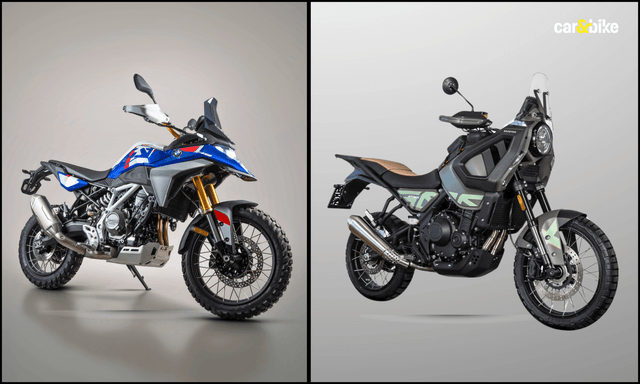 Jafar Rizvi | Dec 4, 2025BMW F 450 GS, Brixton Storr 500 Will Not Debut At India Bike Week 2025Soon after IBW confirmed its venue and dates -- following weeks of uncertainty -- two major participants pulled out of showcasing their new models at the event.2 mins read
Jafar Rizvi | Dec 4, 2025BMW F 450 GS, Brixton Storr 500 Will Not Debut At India Bike Week 2025Soon after IBW confirmed its venue and dates -- following weeks of uncertainty -- two major participants pulled out of showcasing their new models at the event.2 mins read Jaiveer Mehra | Dec 4, 2025Kia Previews Sleek New Coupe Concept: A Successor To The Stinger?The futuristic four-door coupe could preview a spiritual successor to the Stinger sports sedan or become a technological showpiece for the brand’s future technologies for its upcoming models.1 min read
Jaiveer Mehra | Dec 4, 2025Kia Previews Sleek New Coupe Concept: A Successor To The Stinger?The futuristic four-door coupe could preview a spiritual successor to the Stinger sports sedan or become a technological showpiece for the brand’s future technologies for its upcoming models.1 min read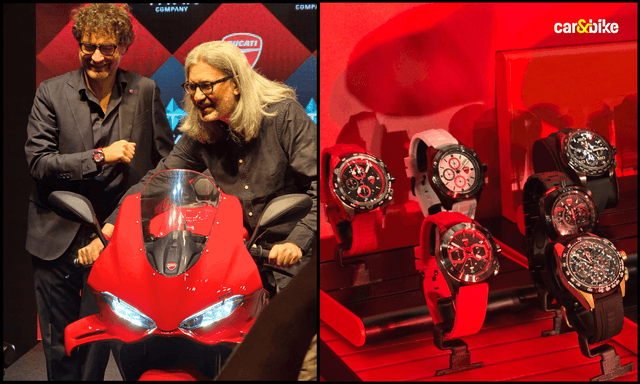 car&bike Team | Dec 4, 2025Ducati Watches Now On Sale In India; Priced From Rs 15,000In partnership with Titan, Ducati has launched 43 watches as part of its latest collection.1 min read
car&bike Team | Dec 4, 2025Ducati Watches Now On Sale In India; Priced From Rs 15,000In partnership with Titan, Ducati has launched 43 watches as part of its latest collection.1 min read Shams Raza Naqvi | Dec 3, 2025Lexus RX Gets A More Affordable Exquisite Trim, Prices Start At Rs. 90 LakhThe new Lexus RX 350h gets some exclusive features and different theme in the cabin.1 min read
Shams Raza Naqvi | Dec 3, 2025Lexus RX Gets A More Affordable Exquisite Trim, Prices Start At Rs. 90 LakhThe new Lexus RX 350h gets some exclusive features and different theme in the cabin.1 min read
 Girish Karkera | Dec 4, 20252026 Honda Prelude First Drive: Domesticated Civic Type RA sporty-looking coupe built to give customers a taste of performance but not at the expense of everyday practicality.5 mins read
Girish Karkera | Dec 4, 20252026 Honda Prelude First Drive: Domesticated Civic Type RA sporty-looking coupe built to give customers a taste of performance but not at the expense of everyday practicality.5 mins read Seshan Vijayraghvan | Nov 29, 2025Mahindra XEV 9S First Drive Review: Big Electric SUV, Bigger ExpectationsThe XEV 9S lands at a time when the EV crowd is growing fast. It’s a big, born-electric, three-row SUV that starts under 20 lakh. It sits close to the XUV700 in size, but the brief is very different. Here’s what it’s like on the road.11 mins read
Seshan Vijayraghvan | Nov 29, 2025Mahindra XEV 9S First Drive Review: Big Electric SUV, Bigger ExpectationsThe XEV 9S lands at a time when the EV crowd is growing fast. It’s a big, born-electric, three-row SUV that starts under 20 lakh. It sits close to the XUV700 in size, but the brief is very different. Here’s what it’s like on the road.11 mins read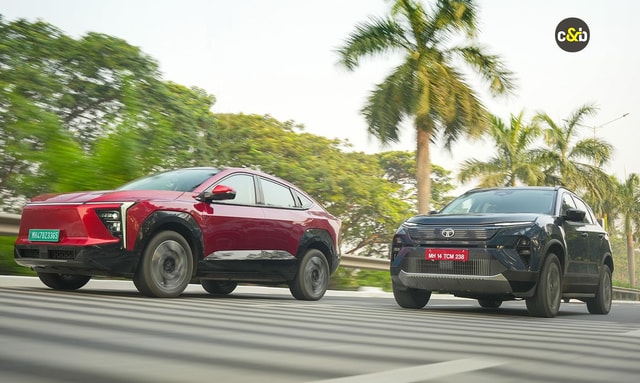 Bilal Firfiray | Nov 26, 2025Tata Harrier EV vs Mahindra XEV 9e: Battle Of India’s Electric TitansWhen India made two electric SUVs battle it out, the winner is the buyer. They get a choice to take home what’s best suited for them – and read on to find out which one is better for YOU.1 min read
Bilal Firfiray | Nov 26, 2025Tata Harrier EV vs Mahindra XEV 9e: Battle Of India’s Electric TitansWhen India made two electric SUVs battle it out, the winner is the buyer. They get a choice to take home what’s best suited for them – and read on to find out which one is better for YOU.1 min read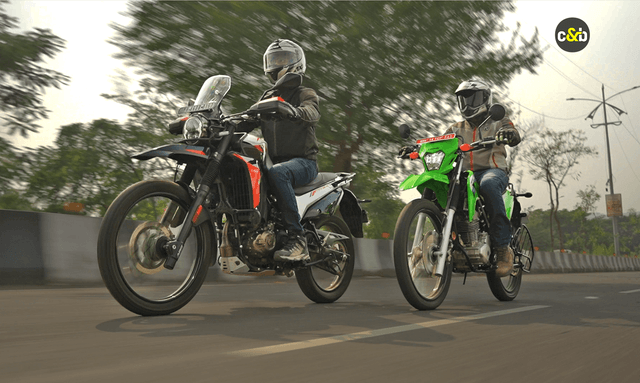 Janak Sorap | Nov 19, 2025Hero Xpulse 210 Vs Kawasaki KLX 230 Comparison Review: Dual-Sport DilemmaWith a price difference of just Rs 12,000, which of the two dual-sport motorcycles is meant for you?1 min read
Janak Sorap | Nov 19, 2025Hero Xpulse 210 Vs Kawasaki KLX 230 Comparison Review: Dual-Sport DilemmaWith a price difference of just Rs 12,000, which of the two dual-sport motorcycles is meant for you?1 min read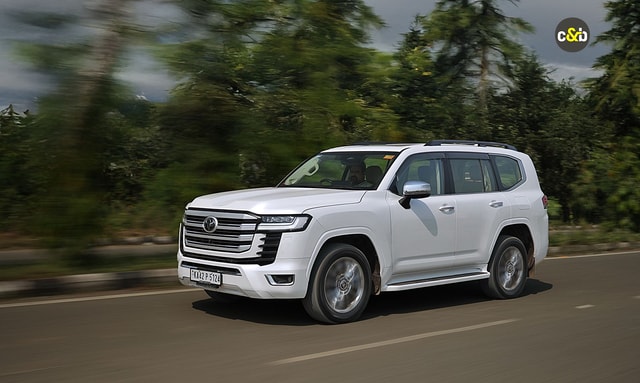 Jaiveer Mehra | Nov 17, 20252025 Toyota Land Cruiser 300 Review: Beast From The EastThe Land Cruiser name may have a long and storied history, but does it fit the bill for an Rs 2 crore-plus SUV in India?13 mins read
Jaiveer Mehra | Nov 17, 20252025 Toyota Land Cruiser 300 Review: Beast From The EastThe Land Cruiser name may have a long and storied history, but does it fit the bill for an Rs 2 crore-plus SUV in India?13 mins read





















































































































































